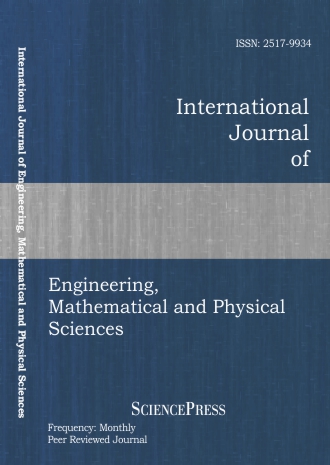
Scholarly
Volume:2, Issue: 7, 2008 Page No: 442 - 448
International Journal of Engineering, Mathematical and Physical Sciences
ISSN: 2517-9934
868 Downloads
Trace Emergence of Ants- Traffic Flow, based upon Exclusion Process
Biological evolution has generated a rich variety of successful solutions; from nature, optimized strategies can be inspired. One interesting example is the ant colonies, which are able to exhibit a collective intelligence, still that their dynamic is simple. The emergence of different patterns depends on the pheromone trail, leaved by the foragers. It serves as positive feedback mechanism for sharing information. In this paper, we use the dynamic of TASEP as a model of interaction at a low level of the collective environment in the ant-s traffic flow. This work consists of modifying the movement rules of particles “ants" belonging to the TASEP model, so that it adopts with the natural movement of ants. Therefore, as to respect the constraints of having no more than one particle per a given site, and in order to avoid collision within a bidirectional circulation, we suggested two strategies: decease strategy and waiting strategy. As a third work stage, this is devoted to the study of these two proposed strategies- stability. As a final work stage, we applied the first strategy to the whole environment, in order to get to the emergence of traffic flow, which is a way of learning.
Authors:
Keywords:
References:
[1] A.B. Kolomeisky, G.M. Schutz, E.B. Kolomeisky and J.P. Straley